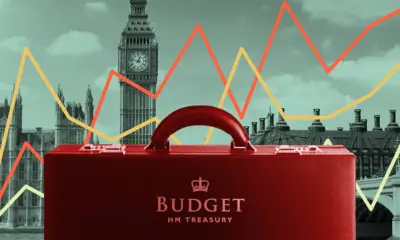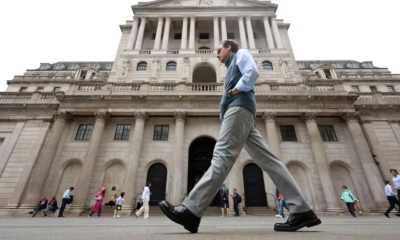Business
GBP Stability Amid Global Currency Volatility

The British pound has shown notable resilience through late 2025 as global currency markets experience turbulence driven by diverging monetary policies and slowing economic growth. Analysts attribute the pound’s relative stability to the Bank of England’s cautious rate strategy and the United Kingdom’s improving fiscal discipline.
While emerging market currencies have faced significant depreciation and the euro remains under pressure from uneven growth in the bloc, the pound has hovered between 1.25 and 1.28 against the U.S. dollar, showing limited volatility compared to its major peers.
Bank of England’s Measured Monetary Policy
The Bank of England has managed to balance inflation control with the need to sustain domestic growth. Recent statements from Governor Andrew Bailey suggest that while interest rate cuts may be considered in mid-2026, monetary policy will remain restrictive until inflation clearly falls below the two percent target.
This deliberate stance has helped anchor investor confidence. Sterling assets continue to attract capital inflows, particularly in government bonds and high-yield corporate debt, reflecting the UK’s reputation for monetary prudence even amid global uncertainty.
Trade and Fiscal Fundamentals Support the Pound
Trade data for 2025 show gradual improvement in the UK’s external position. Exports of services, particularly in finance and technology, have outperformed goods trade, offsetting the impact of weaker global demand.
The Treasury’s mid-year report highlighted a narrowing fiscal deficit, driven by stronger tax revenues and lower energy subsidies. Economists argue that this combination of fiscal improvement and trade stability has reduced the structural risks that often weigh on the pound.
Global Volatility and Safe Haven Dynamics
The pound’s recent behavior has also reflected its hybrid status as both a risk and safe-haven asset. During periods of sharp equity market declines, sterling has tended to weaken slightly against the dollar but strengthened against risk-sensitive currencies such as the Australian dollar and Korean won.
Currency strategists note that the pound’s performance now mirrors the behavior of the Swiss franc more closely than that of the euro, signaling its growing appeal as a relatively stable asset in uncertain markets.
Investor Sentiment and Capital Markets
Investor appetite for sterling-denominated assets remains strong. Foreign investment in UK equities and property has increased, supported by favorable valuations and moderate yields. London’s bond market has seen consistent demand from institutional investors in Asia and the Middle East seeking diversification away from the dollar.
Meanwhile, the London Stock Exchange’s recent introduction of green bond listings has expanded the currency’s role in sustainable finance. Analysts believe this diversification of capital inflows further insulates the pound from short-term market shocks.
Currency Outlook Linked to Trade and Innovation
Looking forward, the strength of the pound will depend on structural reforms that boost productivity and export competitiveness. The government’s digital trade and AI development initiatives aim to attract international investment and strengthen the UK’s role in global technology supply chains.
Financial services and fintech exports continue to be major contributors to the current account, with the sector forecast to expand by 4.3 percent in 2026. This trend, supported by transparent regulation and deep capital markets, reinforces the pound’s position as a global transactional and reserve currency.
Energy Prices and External Risks
Energy prices remain a key external risk to currency stability. A prolonged rise in global oil and gas costs could widen the trade deficit and increase import-driven inflationary pressures. The government’s recent push toward renewable energy, particularly offshore wind and hydrogen technology, is aimed at reducing dependence on imported fuels.
If successful, these initiatives will not only strengthen energy security but also improve the country’s balance of payments position, supporting a more sustainable outlook for sterling.
Comparison with Global Peers
Compared with other major currencies, the pound’s stability is striking. The Japanese yen continues to depreciate under ultra-loose monetary policy, and the euro remains under pressure due to diverging fiscal stances within the bloc. The U.S. dollar, while strong, is facing challenges from slowing growth and persistent deficits.
In this environment, the pound’s moderate valuation and transparent policy framework make it an attractive alternative for central banks seeking to diversify reserves. Market surveys indicate that global reserve managers are gradually increasing their holdings of sterling assets.
A Balanced Path Ahead
The pound’s steady performance underscores the success of the UK’s macroeconomic management. While global markets remain volatile, the combination of sound policy, fiscal credibility, and diversified growth sectors continues to anchor investor confidence.
Maintaining this stability will require careful navigation through 2026, with authorities balancing inflation risks, productivity challenges, and external headwinds. If current trends persist, the pound is expected to remain one of the most stable major currencies in the global financial landscape.




















